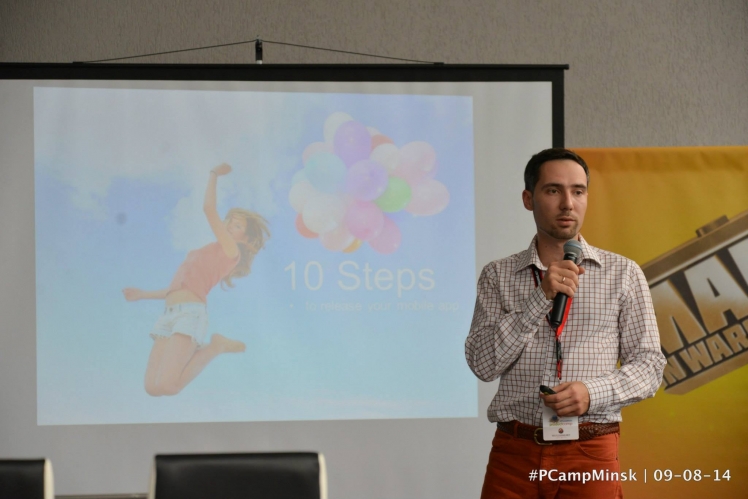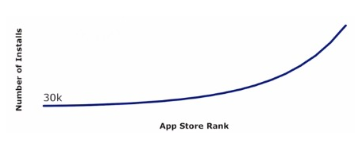Last week I had a chance to attend and speak on behalf of ComboApp at ProductCamp Minsk 2014, a BarCamp event dedicated to software product management and marketing. The meet-up was organized by Yandex and hosted by Wargaming, an award-winning online game developer and publisher and one of the leaders in the free-to-play MMO market. I thought it might be worthwhile to share with you what I actually spoke about at ProductCamp Minsk, so below is my round-up of the key highlights for those in search of a perfect mobile app launch strategy.

First of all, let's see what key challenges are facing mobile product marketing these days:
- Increased expectations
- Poor understanding of the mobile apps market and its rules
- Overestimated opportunities
- Lack of planning
- Lack of measurable KPIs
- Inappropriate or no control of campaign results
- "Will do what others do!"
- Believing that the app's release is your end result!
Now, how do we resolve the above and succeed with our app in a relevant app store?
Read more about ios app developer.
1. Strategize your entry to the mobile market
- Conceptualize your app
- Research your particular niche and its current trends
- Profile your target audience focusing on user behavior patterns
- Determine your USPs and stick to them throughout your product development and marketing cycle
- Find a solid way to prove your product's competitive advantage
2. Set goals and budget
- App's prototype
- Start-up of your app development project
- Your app's beta version
- Soft launch
- Full scale launch
- Update and improve ON A REGULAR BASIS!
3. Test your app's prototype within your focus group
Did you know that around 80% of mobile product maintenance costs are normally spent on fixing app usability issues? In order to reduce this expenditure it's business critical to test your future app within a focus group (i.e. a group of potential app users). Testing within a focus group will eventually allow you to improve app's quality before investing in its promotion, create a consumer facing, not a developer facing app, and cut down costs spent on apps development and post-release change implementation.
Read more about software development company.
Unlike internal QA that aims to eliminate bugs / errors, perform crash / load testing and make sure the app is flawless and technologically ready to meet with its users in the app store, focus group, or external testing, aims to get user feedback and identify app's weaknesses before the public release, improve usability, check potential users' reaction to the app (is it really useful for them?), and create a roadmap for future upgrades.
4. Analyze your app
Imagine your app has already been developed and launched and now you want to analyze it in terms of app store performance, user acquisition, usability, etc. What key factors should you analyze to see if it functions the way you want it to?
- How many users continue using your app in 1, 7, 14 days after its download?
- How many new users make purchases using your app (vs the old ones)?
- What's your app's conversion rate (based on the goals you set for it)?
- How much does it cost to acquire each new user?
- How much do you earn from each acquired user after 1, 7, 14 days?
- In case of cross-platform apps, what OS / device brings you most of active users?
A perfect app analytics system should be able to:
- track down / identify traffic sources
- provide in-depth segmented reports for each event / activity related to your user interaction
- provide funnel / cohort / user retention analysis
I suggest your to-be-chosen analytics tool has the following basic features:
- A/B testing capabilities
- Targeted push notifications
- Full-featured API to enable raw data download and analysis
- Cost and ROI analysis
Unfortunately, none of the apps analytics tools available on the market these days can do all of the above equally effectively, which significantly impedes comprehensive app analysis.
5. Optimize your app for each relevant app store
In its broadest sense, app store optimization (ASO) is a combination of communication elements that enable your app's organic traffic growth. ASO aims to:
- increase your app's discoverability in the online / mobile space
- increase app's installs
- adjust your app to search terms used by your target audience
- as a result of the latter - increase your app's search traffic
What elements are usually optimized for Apple App Store and Google Play?
- app's name
- app store icon
- screenshots
- promo video
- keywords and key phrases
- app's description
6. Acquire users
- set up metrics
- plan KPIs
- track all available channels
- use a media mix (own + acquired + paid)
- support all forms of attribution including invent networks, mobile social networks, premium traffic, RTB, and web traffic
7. PR your app
- Plan your app's PR campaign
- Create the right message to your audience
- Create a target media pool to pitch your app to (bloggers, app reviewers, journalists relevant to what your app helps users with)
- Spread a word about your app across all digital communication channels such as social networks, email, wikis, app directories, etc
- Track results and follow up
- Have patience!
Note that around 60% of all installs are initiated by online / mobile search, so getting your app featured in external and high Goolge-PR blogs and directories is as important as testing or updating it on a regular basis!
Read more about android app development.
8. Manage your app community
- Instant work with user feedback: e.g., responding to comments, asking for input, etc
- Build your app's landing page or website to tell a story of your app and what it can do
- Integrate in-app messaging and push notifications
- Run email campaigns to promote your app and special offers relevant to it
- Build a strong relationship with the media, especially bloggers (follow their social accounts, offer incentives for reviewing your app, invite them to lunch, etc)
9. Learn, update, iterate
- Create a schedule of app updates and do your best to stick to it
- Update your app's design based on the current mobile design trends
- Optimize your app for a new OS version
- Link your updates to newsworthy events such as Superbowl or holidays to facilitate your marketing efforts
- Always explore your user feedback and integrate it into your updates plan
- Personalize and localize your app
10. Make sure your app ranks well in Apple App Store and Google Play
App Store:

- ascending exponential function
- increase in pricing
- cost of change from ranking #10 in Top Chart to ranking #3 and then #1 differs a lot
Google Play ranks your app based on the following criteria:
- # of downloads
- # and quality of user comments and reviews
- social proof - # of app's +1's in Google+, Facebook likes / shares
- general app quality - seamless and bug-free functionality and UX design
- relevance of metadata and keywords density
- # of back links from credible sources






